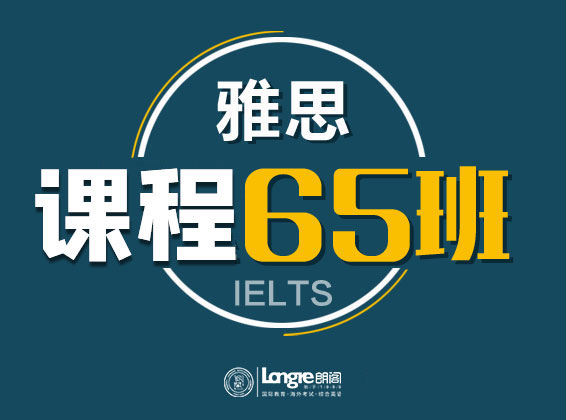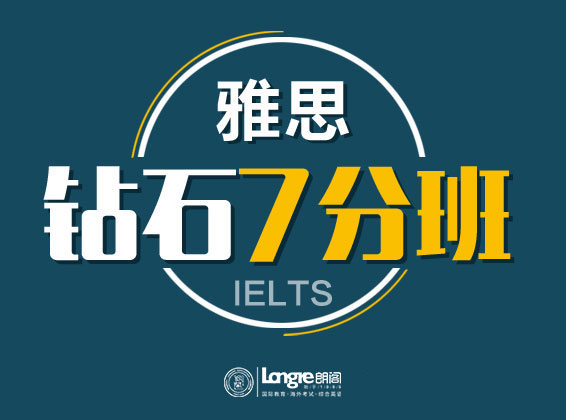|
P1 摩斯密码 P2 双语使用情况 P3 新西兰变暖 朗阁讲师点评 1. 本场考试的难度较难。 2. 整体分析:涉及科技类(P1)、语言文化类(P2)、环境类(P3) 本次考试三篇文章中两旧一新,话题相对熟悉。**篇是旧题,考察摩斯密码,题型是段落大意配对题和判断题。第二篇讨论双语问题,真题中有类似话题,考生可以参考12-6-3 The Benefits of Being Bilingual。第三篇文章考察单选、填空和判断题,选择题耗时较长。需要注意3篇文章难度并不一定是递进的,建议考生拿到试卷先浏览一下全文,考生可以调整自己的做题顺序,从简单的文章做起。 3. 部分答案及参考文章: Passage 1:摩斯密码Morse Code 题型: List of Headings + 判断 参考答案 1. x 2. xi 3. iii 4. i 5. vi 6. v 7. ix 8. vii 9. FALSE 10. TRUE 11. TRUE 12.NOT GIVEN 13.NOT GIVEN Morse Code A Morse code is being replaced by a new satellite-based system for sending distress calls at sea. Since 1992 countries around the world have been decommissioning their Morse equipment with similar (if less poetic) sign-offs, as the worlds shipping switches over to a new satellite- based arrangement, the Global Maritime Distress and Safety System. The final deadline for the switch-over to GMDSS is February 1st, a date that is widely seen as the end of an era. For although dots and dashes will not die out altogether — they will, for example, continue to be used by amateur radio operators, spies, and some members of the armed forces — the switch to GMDSS marks the end of the last significant international use of Morse. B The code has, however, had a good history. Appropriately for a technology commonly associated with radio operators on sinking ships, the idea of Morse code is said to have occurred to Samuel Morse while he was on board a ship crossing the Atlantic. At the time Morse was a painter and occasional inventor, but when another of the ship’s passengers informed him of recent advances in electrical theory, Morse was suddenly taken with the idea of building an electric telegraph. Other inventors had been trying to do just that for the best part of a century. Morse succeeded and is now remembered as ‘the father of the telegraph’ partly thanks to his single mindedness — it was 12 years, for example, before he secured money from Congress to build his first telegraph line — but also for technical reasons. C Compared with rival electric telegraph designs, Morse’s design was very simple: it required little more than a ‘key’(essentially, a spring-loaded switch) to send messages, a clicking ‘sounder’ to receive them, and a wire to link the two. But although Morse’s hardware was simple, there was a catch: in order to use his equipment, operators had to learn the special code of dotsand dashes. Originally, Morse had not intended to use combinations of dots and dashes to represent individual letters. His first code, sketched in his notebook during that transatlantic voyage, used dots and dashes to represent the dig its 0 to 9. Morse’s idea was that messages would consist of strings of numbers corresponding to words and phrases in a special numbered dictionary. But Morse later abandoned this scheme and, with the help of an associate, Alfred Vail, devised the Morse alphabet, which could be used to spell out messages a letter at a time in dots and dashes. At first, the need to learn this complicated-looking code made Morse’s telegraph seem impossibly tricky compared with other, more user -friendly designs. Cooke’s and Wheatstone’s telegraph, for example, use d five needles to pick out letters on a diamond-shaped grid. But although this meant that anyone could use it, it also required five wires between telegraph stations. Morse’s telegraph needed only one. D As electric telegraphy took off in the early 1850s, the Morse telegraph quickly became dominant. It was adopted as the European standard in 1851, allowing direct connections between the telegraph networks of different countries. (Britain chose not to participate, sticking with needle telegraphs for a few more years. ) By this time Morse code had been revised to allow for accents and other foreign characters, resulting in a split between American and International Morse that continues to this day. E On international submarine cables, left and right swings of a light-beam reflected from a tiny rotating mirror were used to represent dots and dashes. Meanwhile a distinct telegraphic subculture was emerging, with its own customs and vocabulary, and a hierarchy based on the speed at which operators could send and receive Morse code. First-class operators, who could send and receive at speeds of up to 45 words a minute, handled press traffic, securing the best -paid jobs in big cities. At the bottom of the pile were slow, inexperienced rural operators, many of whom worked the wires as part-timers. As their Morse code improved, however, rural operators found that their new-found skill was a passport to better pay in a city job. Telegraphers soon swelled the ranks of the emerging middle classes. Telegraphy was also deemed suitable work for women. By 1870, a third of the operators in the Western Union office in New York, the largest telegraph office in America, were female. F In a dramatic ceremony in 1871, Morse himself said goodbye to the global community of telegraphers he had brought into being. By the time of his death in 1872, the world was well and truly wired: more than 650, 000 miles of telegraph line and 30, 000 miles of submarine cable were throbbing with Morse code; and 20, 000towns and villages were connected to the global network. Just as the Internet is today often called an ‘information superhighway’, the telegraph was described in its day as an ‘instantaneous highway of thought’. G But by the 1890s the Morse telegraph’s heyday as a cutting -edge technology was coming to an end, with the invention of the telephone and the rise of automatic telegraphs, precursors of the teleprinter, neither of which required specialist skills to operate. Morse code, however, was about to be given a new lease of life thanks to another new technology:wireless. Following the invention of radiotelegraphy by Guglielmo Marconi in 1896, its potential for use at sea quickly became apparent. For the first time, ships could communicate with each other, and with the shore, whatever the weather and even when out of visual range. In 1897 Marconi successfully sent Morse code messages between a shore station and an Italian warship 19km (12 miles) away. The first sea rescue after a distress call sent by radiotelegraph took place in 1899, when a lightship in the Dover Straits reported the grounding of Elbe, a steamship. Passage 2:双语使用情况 题型、具体文章和参考答案待确认 Passage 3:新西兰变暖Global Warming in New Zealand 题型:单选+填空+判断 参考答案 27.D 28.B 29.A 30.C 31.A 32.A 33. high tides 34. agricultural production 35. coastal boundaries 36. NOT GIVEN 37. NOT GIVEN 38. NO 39. YES 40. NO Global Warming in New Zealand For many environmentalists, the world seems to be getting warmer. As the nearest country of South Polar Region, New Zealand has maintained an upward trend in its average temperature in the past few years. However, the temperature in New Zealand will go up 4oC in the next century while the polar region will go up more than 6oC. The different pictures of temperature stem from its surrounding ocean which acts like the air conditioner. Thus New Zealand is comparatively fortunate. Scientifically speaking, this temperature phenomenon in New Zealand originated from what researchers call “SAM” (Southern Annular Mode), which refers to the wind belt that circles the Southern Oceans including New Zealand and Antarctica. Yet recent work has revealed that changes in SAM in New Zealand have resulted in a weakening of moisture during the summer, and more rainfall in other seasons. A bigger problem may turn out to be heavier droughts for agricultural activities because of more water loss from soil, resulting in poorer harvest before winter when the rainfall arrive too late to rescue. Among all the calamities posed be drought, moisture deficit ranks the first. Moisture deficit is the gap between the water plants need during the growing season and the water the earth can offer. Measures of moisture deficit were at their highest since the 1970s in New Zealand. Meanwhile, ecological analyses clearly show moisture deficit is imposed at different growth stage of crops. If moisture deficit occurs around a crucial growth stage, it will cause about 22% reduction in grain yield as opposed to moisture deficit at vegetative phase. Global warming is not only affecting agriculture production. When scientists say the country’s snow pack and glaciers are melting at an alarming rate due to global warming, the climate is putting another strain on the local places. For example, when the development of global warming is accompanied by the falling snow line, the local skiing industry comes into a crisis. The snow line may move up as the temperature goes up, and then the snow at the bottom will melt earlier. Fortunately, it is going to be favorable for the local skiing industry to tide over tough periods since the quantities of snowfall in some areas are more likely to increase. What is the reaction of glacier region? The climate change can be reflected in the glacier region in southern New Zealand or land covered by ice and snow. The reaction of a glacier to a climatic change involves a complex chain of processes. Over time periods of years to several decades, cumulative changes in mass balance cause volume and thickness changes, which will affect the flow of ice via altered internal deformation and basal sliding. This dynamic reaction finally leads to glacier length changes, the advance or retreat of glacier tongues. Undoubtedly, glacier mass balance is a more direct signal of annual atmospheric conditions. The latest research result of National Institute of Water and Atmospheric (NIWA) Research shows that glaciers line keeps moving up because of the impacts of global warming. Further losses of ice can be reflected in Mt. Cook Region. By 1996, a 14 km long sector of the glacier had melted down forming a melt lake (Hooker Lake) with a volume. Melting of the glacier front at a rate of 40 m/yr will cause the glacier to retreat at a rather uniform rate. Therefore, the lake will continue to grow until it reaches the glacier bed. A direct result of the melting glaciers is the change of high tides the serves the main factor for sea level rise. The trend of sea level rise will bring a threat to the groundwater system for its hyper-saline groundwater and then pose a possibility to decrease the agricultural production. Many experts believe that the best way to counter this trend is to give a longer-term view of sea level change in New Zealand. Indeed, the coastal boundaries need to be upgraded and redefined. There is no doubt that global warming has affected New Zealand in many aspects. The emphasis on the global warming should be based on the joints efforts of local people and experts who conquer the tough period. For instance, farmers are taking a long term, multi-generational approach to adjust the breeds and species according to the temperature. Agriculturists also find ways to tackle the problems that may bring to the soil. In broad terms, going forward, the systemic resilience that’s been going on a long time in the ecosystem will continue. How about animals’ reaction? Experts have surprisingly realized that animals have unconventional adaptation to global warming. A study has looked at sea turtles on a few northern beaches in New Zealand and it is very interesting to find that sea turtles can become male or female according to the temperature. Further researches will try to find out how rising temperatures would affect the ratio of sex reversal in their growth. Clearly, the temperature of the nest plays a vital role in the sexes of the baby turtles. Tackling the problems of global warming is never easy in New Zealand, because records show the slow process of global warming may have a different impact on various regions. For New Zealand, the emission of carbon dioxide only accounts for 0.5% of the world’s total, which has met the governmental standard. However, New Zealand’s effort counts only a tip of the iceberg. So far, global warming has been a world issue that still hangs in an ambiguous future. 考试建议 1.从已知信息来看,阅读速度依旧是影响考生得分的关键。同时,***近考试常常考察选择题型,该题型相对来说对细节要求更高,耗时更长。如果平时烤鸭没有太关注选择题的话,可以参考练习10-4-3,11-2-3,11-4-2,12-3-3,12-4-2,13-1-3。下场考试,烤鸭们还是注意首篇出现填空+判断的篇章。第二篇注意出现配对题相关的搭配。课下练习注意时间分配合理,熟练掌握各个题型和篇章搭配类型的定位方法。同时,下场考试仍需注意List of Headings题型,重点注意常见段落结构如何区分主次信息,抽象选项和原文信息如何识别出对应点。填空题除了高频直接填空外,还需关注选词填空。 3. 重点浏览2014到2019年机经。 |
文中图片素材来源网络,如有侵权请联系删除











